

  |

|
BACH 726
Johann Sebastian BACH
Six Harpsichord Toccatas
* CLICK LINKS TO LISTEN *
Toccata in f-sharp minor, BWV 910
Isolde Ahlgrimm, Ammer pedal-harpsichord
|
There were several formats known to Baroque Music.
The Cantata, from Latin cantare to sing, was of course a sung piece. The Sonata (Latin sonare = to sound) was a chamber instrumental piece. The concerto was a "concerted" composition played by a group of musicians, alternating with a soloist. In all of these cases, history has clearly established that tempi were strictly maintained. Conductors would beat time on their desks or lecterns with rolled-up manuscript, or for larger groups, would often rap out the time on the floor with a long staff.
In complete contrast, the toccata, from the Latin toccare = to touch, was specifically a solo keyboard showpiece in which the solo player, being unfettered by the need to keep time with others, was permitted, indeed positively invited and expected to display individuality in interpretation, and to perform with fire and panache. Generally written for organ or harpsichord, the touch and execution of the performer is exhibited in the imaginative interlacing of running passages and full chords with sections in imitative style (fugues). Among the works that Johann Sebastian Bach wrote for keyboard instruments in his early years, the seven clavier toccatas BWV 910 to 916 of which six are recorded here, hold a prominent place, demonstrating this improvisatory freedom to an extent unparalleled in his own works and indeed in those of his contemporaries with the possible exception of Buxtehude's organ works.
Vienna-born Isolde Ahlgrimm received her first piano lessons at the age of four from her mother, an accomplished pianist whose musicality was once rewarded with a kiss from Brahms! At the age of seven she entered the Vienna Music Academy and obtained her diploma in 1932. She quickly adopted baroque music, together with the harpsichord, as her specialty, further encouraged by her friendship with and later marriage to Dr Erich Fiala. The couple gave numerous performances of baroque and rococo music in Vienna, and as soloist, Ms Ahlgrimm performed the complete harpsichord works of Bach, and the complete piano works of Mozart on a 1787 "hammerklavier", performing both cycles entirely from memory as was her custom. She became convinced of the need for an organ-type pedalboard, not only for organ practice, but to achieve many of the longer hand-spans demanded by Bach, and to add bass emphasis whenever the music demanded.
The combination of Ms Ahlgrimm's uniquely virtuosic, almost improvisational style of playing with her Ammer pedal-harpsichord brings these Toccatas stunningly to life in a way which no other performer has to our knowledge yet achieved. The Toccatas demand a performance with drive and panache, a demand more than amply fulfilled in these electric performances.
|
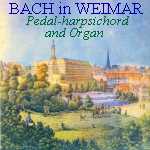
|
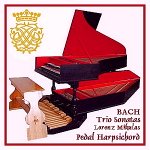
|
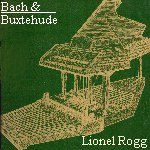
|
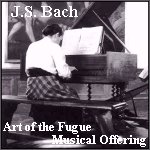
|
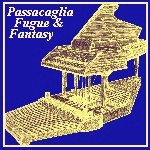
|

|